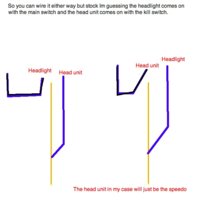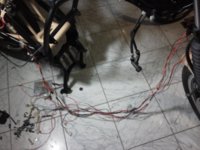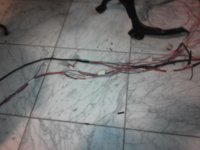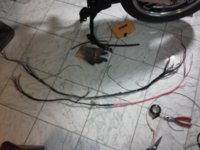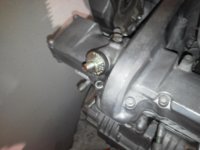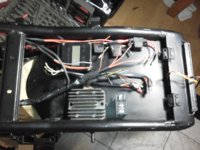So I found this little bit of useful information. So according to this the black/white wire coming from the ignition can just be capped right?
Also according to this info the safety relay has a diode that acts as a resistor. I am going to get rid of the relay, so do I need to put a diode in its place or do I just connect the wire? If I need a diode what kind do I use?
One of the most frustrating problems you can run into is a bike that refuses to crank over, or will crank over but won't ever fire. Assuming it's not an engine (fuel or mechanical condition) issue, then it may be caused by your electrical system; more specifically, by the rather unique system of inter-related devices that Yamaha collectively refers to as their "safety switch system". Consisting of assorted switches, relays and their wiring, you may have to do some heavy-duty electrical sleuthing in order to determine where the problem resides.
Curiously, Yamaha used the same general style of "cube" relays in a variety of different positions for the safety system, and although they all look virtually identical to each other, they in fact all perform differently. But since they are all interchangeable......a headlight relay, for instance, will happily plug into the sidestand relay wiring harness connector shell....so the first troubleshooting step is to make sure that each relay is correct and in its correct position.
For instance, the sidestand relay is a normally closed relay while the others relays are normally open. The head light relay and the ignition cut off relay (also called the neutral safety relay) both contain diodes, which means that they are controlling voltage coming from two different sources. Although they are both normally open and both contain diodes, they are still vastly different in their coil resistance ratings and are thus not interchangeable.
Since an incorrectly positioned relay will typically not work, or will work "incorrectly" when placed at the wrong position in the harness, determining whether relays are properly positioned, and of the proper "type", can save you some more painful types of troubleshooting!
Also according to this info the safety relay has a diode that acts as a resistor. I am going to get rid of the relay, so do I need to put a diode in its place or do I just connect the wire? If I need a diode what kind do I use?
One of the most frustrating problems you can run into is a bike that refuses to crank over, or will crank over but won't ever fire. Assuming it's not an engine (fuel or mechanical condition) issue, then it may be caused by your electrical system; more specifically, by the rather unique system of inter-related devices that Yamaha collectively refers to as their "safety switch system". Consisting of assorted switches, relays and their wiring, you may have to do some heavy-duty electrical sleuthing in order to determine where the problem resides.
Curiously, Yamaha used the same general style of "cube" relays in a variety of different positions for the safety system, and although they all look virtually identical to each other, they in fact all perform differently. But since they are all interchangeable......a headlight relay, for instance, will happily plug into the sidestand relay wiring harness connector shell....so the first troubleshooting step is to make sure that each relay is correct and in its correct position.
For instance, the sidestand relay is a normally closed relay while the others relays are normally open. The head light relay and the ignition cut off relay (also called the neutral safety relay) both contain diodes, which means that they are controlling voltage coming from two different sources. Although they are both normally open and both contain diodes, they are still vastly different in their coil resistance ratings and are thus not interchangeable.
Since an incorrectly positioned relay will typically not work, or will work "incorrectly" when placed at the wrong position in the harness, determining whether relays are properly positioned, and of the proper "type", can save you some more painful types of troubleshooting!

